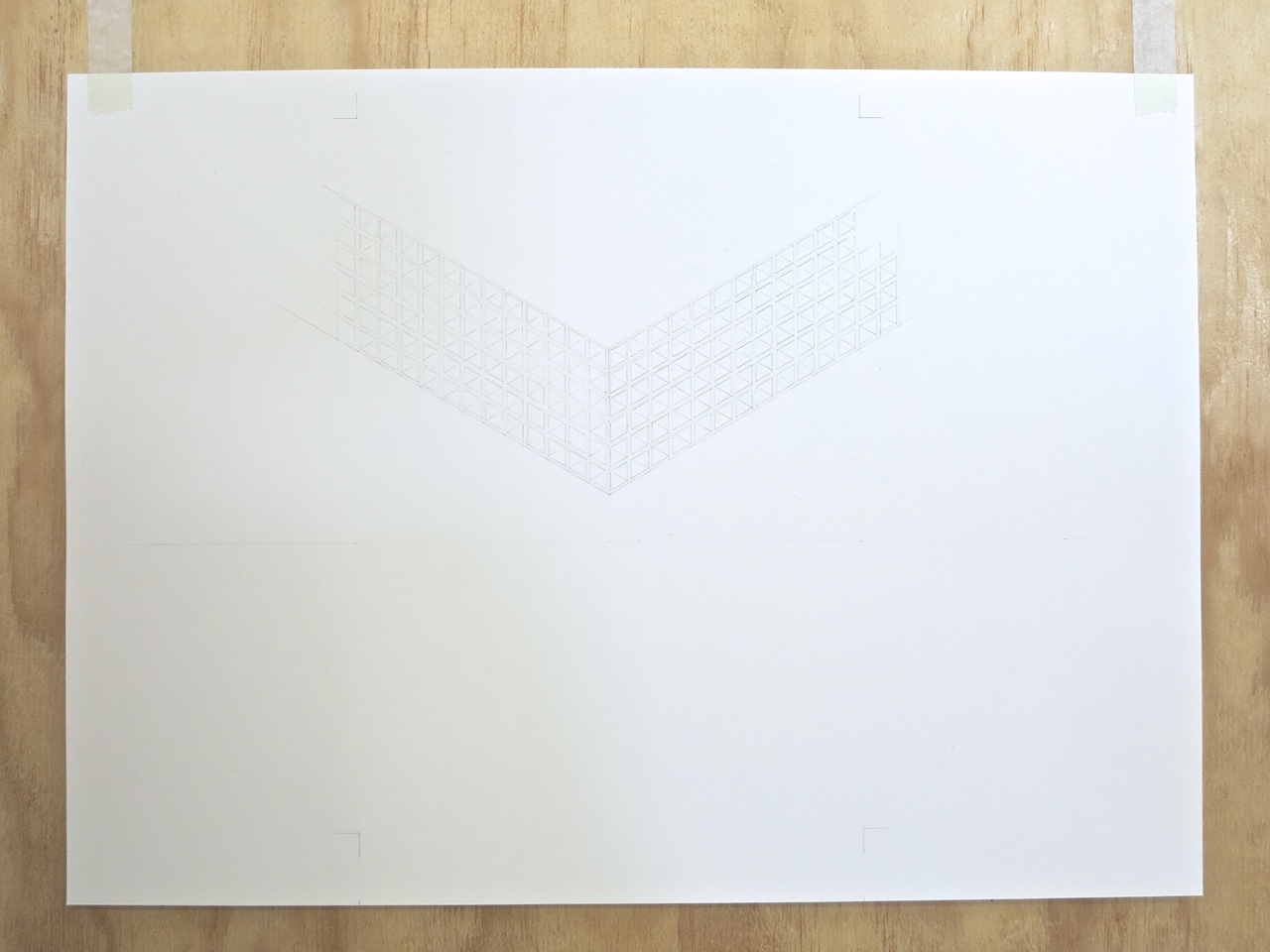On the Active Layer
On the Active Layer (2014)
On the outer regions of the Arctic Circle a modest structure was being built. It was neither large nor small, and although its material was foreign to the vast land surrounding it, its allusion of utility made it appear to belong. The soil underneath was as hard and cold as stone. Here, the earth was in a state of stasis, with a multiplicity of overlapping spaces and times frozen within its crust. Histories lay close to the surface, but were impossible to access.
The building began at its foundations, unraveling a conversation between architecture and ground. A grid of deep holes was dug into the permafrost, and columns inserted. In a land without trees, and few people, the vertical supports stood in for both. Slowly a frame brought the columns together, playing host to a floor, four walls, a sloping roof held up by a heavy central joist, and a few steps leading to a single door. The building vaguely resembled a shed, although its purpose was unclear. It was simultaneously utilitarian in appearance, and without any obvious, or readable, function.
People came and went, briefly inhabiting the building. They moved materials around, but as time passed the structure seemed to be building itself. It was constructed from the outside in, becoming more and more dense as the building process continued towards its core. Eventually the single room was completely full of interlocking horizontal and vertical beams, to the point where visitors were forced to contort their bodies at right angles in order to navigate the structural web.
Energy created by the process of building, and the structure’s inhabitation, generated heat that slowly radiated into the ground. The frozen soil began to soften. The presence of the new building caused the permafrost below to melt, releasing its own histories; thawing flora, fauna, and the remains of other human constructions that had remained inert for thousands of years. As the ground gave way, the vertical and horizontal supports began to fold in on themselves, and the building collapsed into the muddy hole it had created.
At that moment the past and present occupied the same space. All that was solid became temporarily amorphous. The building spoke to its predecessors, and the earth’s histories awoke to the now. Then as quickly as it came, it was over. The soil began to refreeze around the remnants of the building, incasing it in the flat plane of the Tundra. And there it rest, alongside its ancestors. Absorbed in a collection of compressed timescales, the building lay dormant within a geological vacuum at the interface of every past.
On the Active Layer was written for Will to Keep: Reader, for an exhibition by the same name at Archive Space, Sydney.
